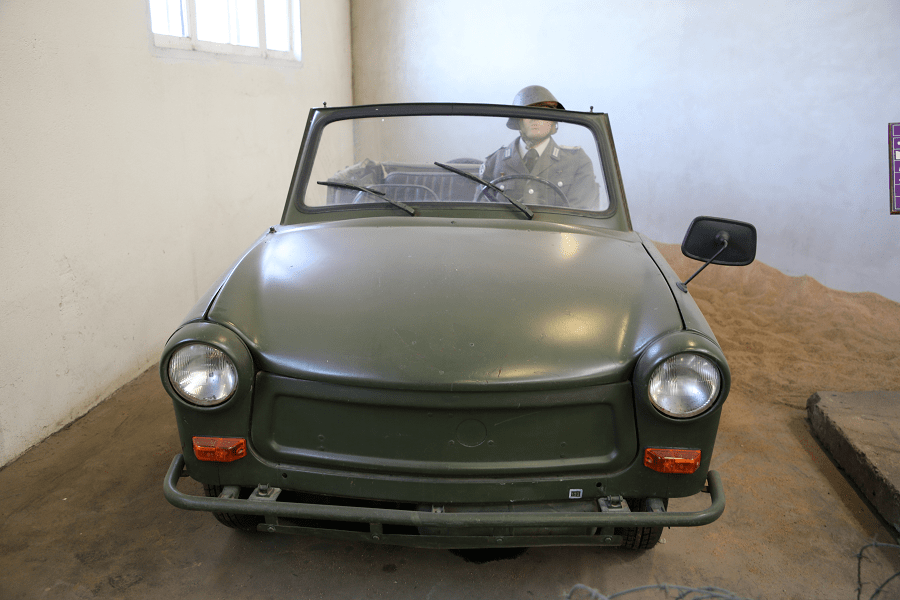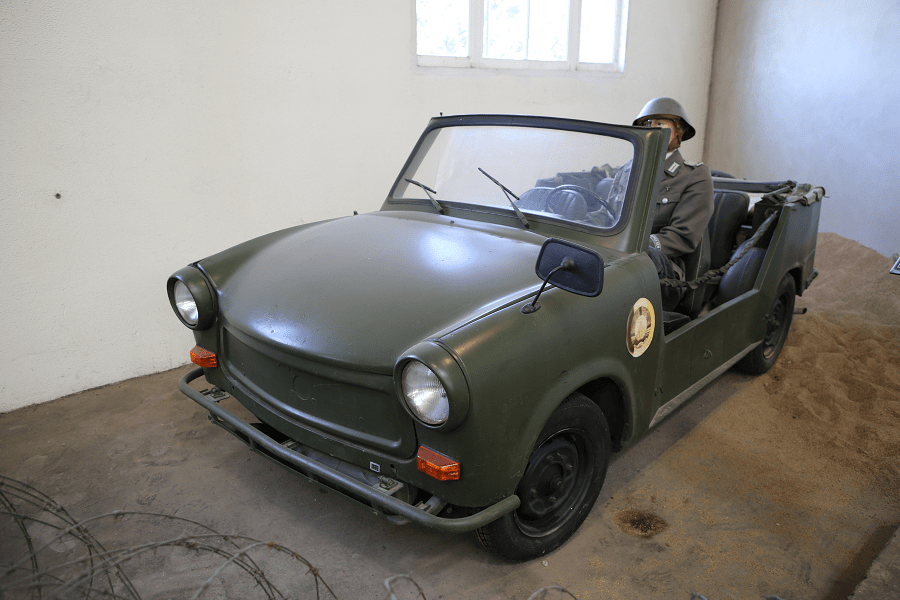The Trabant 601 (or Trabant P601 series) was a Trabant model produced by VEB Sachsenring in Zwickau, Saxony. It was the third generation of the model, built for the longest production time, from 1964 to 1990. As a result, it is the best-known Trabant model and often referred to simply as “the Trabant” or “the Trabi”. During this long production run, 2,818,547 Trabant 601s were produced overall and it was the most common vehicle in former East Germany.
In hindsight, the Trabant 601 can be considered East Germany’s answer to West Germany’s “People’s Car”, the VW Beetle.
Its purpose was to provide a cheap but still reliable car that was very affordable and also easy to repair and maintain. Still, it was at the time of its release rather modern in many ways, with front wheel drive combined with transversely mounted motor, a low maintenance engine, unitary construction, rack and pinion steering, composite bodywork and independent suspension all around.
The car body was made of Duroplast. The main letdown was the pre-war DKW based engine that was competitive when launched, but from the late 1950s into the 1960s, small economy cars in western countries that used two-stroke engines were replaced with cleaner and more efficient four-stroke engines, as employed from the start in the Volkswagen Beetle.
Two-stroke engines of this sort, with crankcase scavenging and lubricating oil provided during fuel intake, burn their lubricating oil by design and produce smoky tailpipe emissions.
However, two-stroke engines were also to be found in cars like the Western German Auto Union 1000 that ended production in 1965, and the Swedish Saab 96 that changed to four-stroke in 1967.
It was planned to replace the two-stroke-motor with a Wankel engine, however, East Germany failed to develop such a motor with satisfying parameters. Later, the lack of development funds in East Germany forced the continued use of a two-stroke engine in the Trabant, thus causing this vehicle to become outdated towards the end of the 1960s and obsolete by the 1980s.












